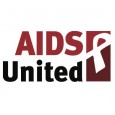This is a guest post by Susan Purchase and Elizabeth Stuart of the Rocky Mountain Morpheus Project.
At the Rocky Mountain Morpheus Project, we work in the small mountain towns of Clear Creek County, Colorado, creating and maintaining relationships with people who inject drugs. We are a three-person volunteer grass-roots organization, handing out supplies donated to us in bulk, and depending on word of mouth to reach new clients. We act in response to simple, stark need: our county has no rooted health services and no efficient way to address injection drug use. We are without a local health clinic or urgent care center, without even a town physician to help do the work. Users here are left to their own devices to stay alive and well in a beautiful yet often harsh environment.
Clear Creek County is high above Denver, on the Continental Divide, along the front range (or eastern slope) of the Rockies. The relics of abandoned mining claims lie all around, but we live among world-class ski resorts and near a town that has welcomed gambling casinos. Now that recreational marijuana is legalized, Green Rush retail shops flourish too. Add to these conditions the heavy traffic of Interstate 70, which streams the length of our county providing a major corridor for drug distribution.
(continued below)

Susan Purchase and Elizabeth Stuart of the Rocky Mountain Morpheus Project Courtesy of AIDS United/Rocky Mountain Morpheus Project
Despite the obstacles and challenges, we know we make a difference because of Seth (name changed for confidentiality), a client who has also taken on the role of peer educator. He has the experience — he is thirty-something, his drug of choice is meth by injection and he has spent ten years in the prison system on drug charges. Seth is tall, rangy, good-looking, and wears a green baseball cap, tilted a bit down over his blue eyes. When we thank him for helping us, he ducks his head, gives a shy smile, and says “I’m trying.”
As peer educator, he plays a key social role in the local drug culture. A de facto community gatekeeper, Seth is a classic example of harm reduction at work. He reaches inside the community and contacts the people who are reluctant to jeopardize their privacy by coming forward themselves. Seth and clients like him are our most effective communication tools for outreach efforts. The back-and-forth energy of the connection is healthy: for Seth, his extended community, and for us as providers.
Seth describes how users in his community often have no hope, how they talk about feeling trapped, lonely, separated from resources, and the seeming inevitability of poor health and early death. Injection drug use is barely acknowledged here, until law enforcement and emergency medical services are called to a scene. Even then, information about safer injection, overdose prevention, and data on overdose-related deaths is hard to come by.
State public health officials and the harm reduction community know that injection drug use poses a significant long-standing problem throughout rural Colorado. However, of Colorado’s 64 counties, only eight have completed the approval process that establishes in-county syringe access providers. Many high-need communities remain almost entirely unserved. This, along with the relationships we build, motivate us to continue our work.
As with many in the drug community, it’s a reach for Seth to imagine living sober — but he wants to quit and says he just needs to figure out his next step. Meanwhile, our work with him continues and we are grateful.
For a related blog post, read “Harm Reduction Efforts at AIDS United.”








Comments
Comments